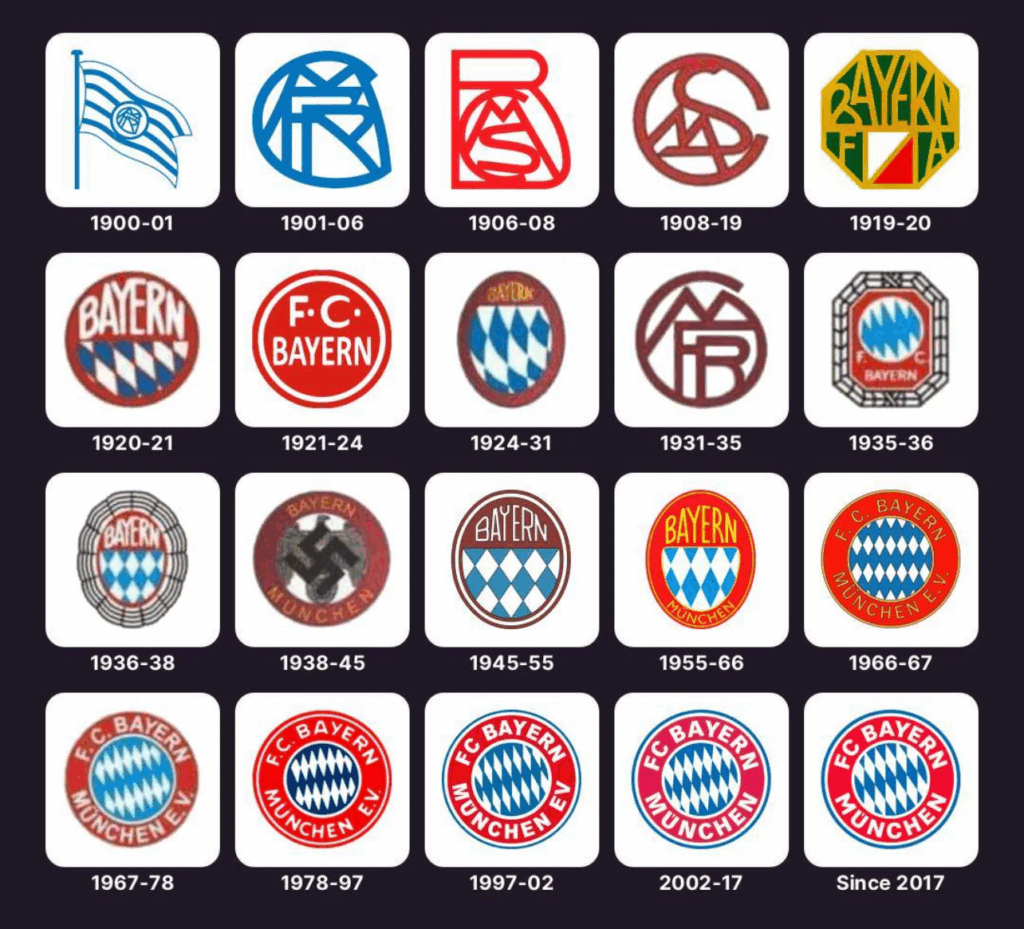For years, Bayern Munich received Nazi connotations as a result of their club badge during the Second World War, which brandished a large black swastika instead of the traditional white and blue lozenges pattern to represent the colours of Bavaria.
The actual story paints a much different picture though, debunking these accusations that the German champions proudly wore the Nazi propaganda symbol on their kits.
The history of Bayern is fascinating, especially in wartime Germany and the years leading up to it. Founded in 1900, the Bavarian giants have a glimmering history of success, even winning the European cup three consecutive times in a row from 1974 to 1976.

In their early days, Bayern could only watch on as 1. FC Nürnberg and SpVgg Fürth dominated Bavarian football. In an attempt to rise above their local rivals, a Jewish man named Kurt Landauer was appointed as club president in 1913. He resumed his role after the end of World War I, and overlooked Bayern’s first German championship triumph in 1932, just one year before he was arrested and sent to a concentration camp.
Adolf Hitler hated football, and the sport certainly wasn’t exempt from his demonic desire to ‘cleanse’ Germany of anyone who opposed his ideological race.
It’s reported that Hitler only attended one football match in his life, and it was a 2-0 German defeat to Norway at the 1936 Olympics, in the very stadium that he had built to showcase German power and dominance. This Norway squad was coached by Asbjørn Halvorsen, a Jewish man who had spent much of his playing career at Hamburg. Hitler didn’t forget this.
The Nazis invaded Norway in 1940, and immediately arrested Halvorsen and sent him to various concentration camps until the end of the war. He was described as weighing just 40kg and suffering from typhus, pneumonia and malnourishment by a journalist who witnessed his transfer from one camp to another.
The beneficiary of all Halvorsen’s creativity at FC Hamburg was his teammate and striker Otto Harder, who left football and worked his way up to commander at the Neuengamme camp after the war broke out. Halvorsen would eventually find himself enduring the torturous conditions of a camp run by a man he once called his teammate and his friend.
Bayern’s links to Judaism didn’t end with president Laundauer, and Hitler’s distaste towards the club accelerated massively in the 1930s.
Gregor Hofmann, a historian specialising in German Socialism said: “About 10 percent of FC Bayern members were Jews, well above the average population.
“There is evidence that the club was perceived as being somewhat ‘Jewish” before 1933, probably based on anti-Semitic prejudices against a rich inner-city club.”
Bayern’s 1932 title winning team featured two Jewish players. In 1934, Bayern players were involved in a fight with the Sturmabteilung (SA), the paramilitary group attached to the Nazi Party. In 1936, Bayern winger Willy Simetstreighter posed for a photo with African-American sprinter Jesse Owens who had enraged Hitler by winning four gold medals at the Olympics, undermining the idea of Aryan physical supremacy. Fullback Sigmund Haringer was almost imprisoned for mocking a Nazi flag waving parade. Captain Conny Heidkamp even hid all of Bayern’s silverware following an appeal for football clubs to hand over their trophies to be melted down to help with the war effort.

Bayern even had threats from the Gestapo after the players greeted Landauer at a friendly against the Swiss national team in Geneva in 1940.
In 1938, Bayern appointed fully fledged Nazi Josef Kellner as club president. He had become a member of Bayern Munich in 1910 and the Nazi party in 1933. This appointment coincided with the addition of the swastika to the club badge. The arrival of Kellner combined with the undeniable pressure from the Nazi party prompted the change of the badge.
The idea that solely Bayern were radically opposed to all aspects of Nazism is inaccurate. In German football as a whole, there was a certain apathy towards National Socialist ideology, and all clubs had to assimilate and adhere to the new policies.
Whilst Bayern showed resistance, the idea that they were forced to have Nazi leadership as propagated by the club is fabricated. Bayern appointed NSDAP member August Harlacher as its deputy chairman in 1930. The photo of Simetsreiter with Jesse Owens, which Bayern claimed to ‘signify the club’s ties to the United States’ is an invalid argument, as hundreds of Aryan athletes took a photo with Owens, given his fame in that moment. Other clubs also hid their trophies from the hands of the Nazis.
Bayern Munich certainly weren’t as radical as they like to believe and convey, but the labelling of them as Nazi enablers due to their badge between 1938-45 is far from the truth.



